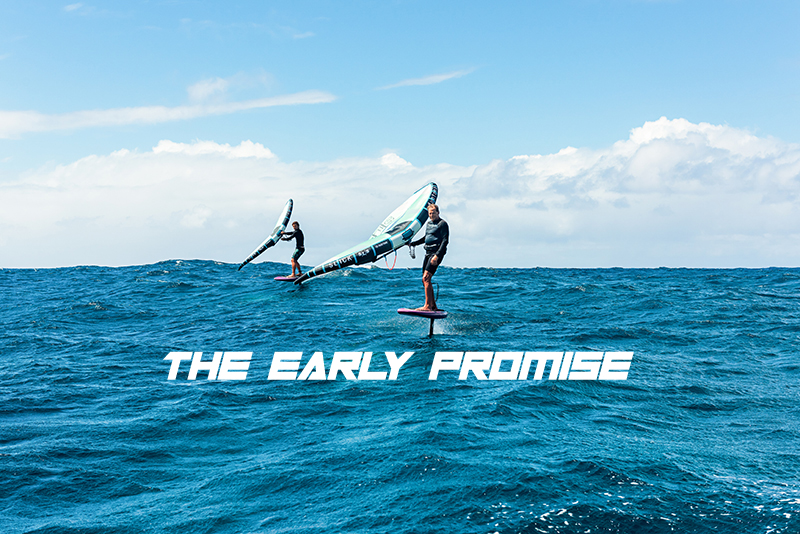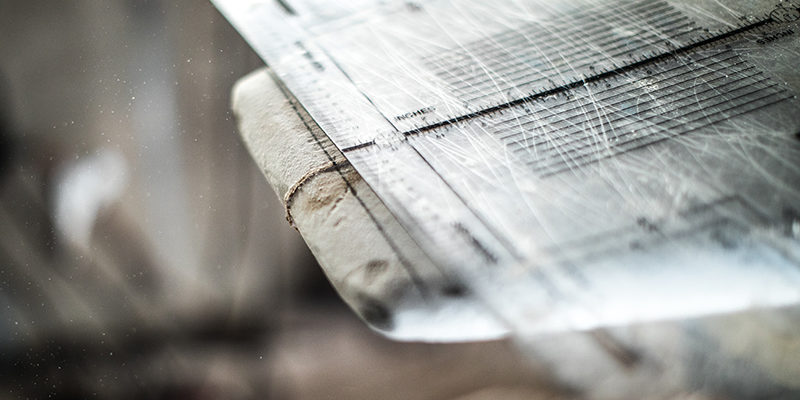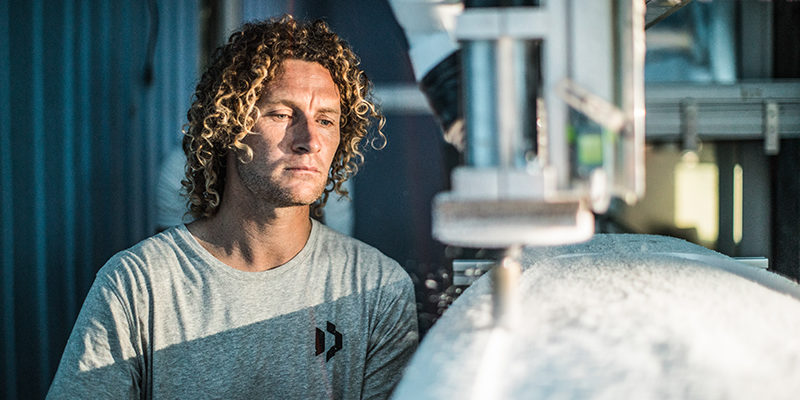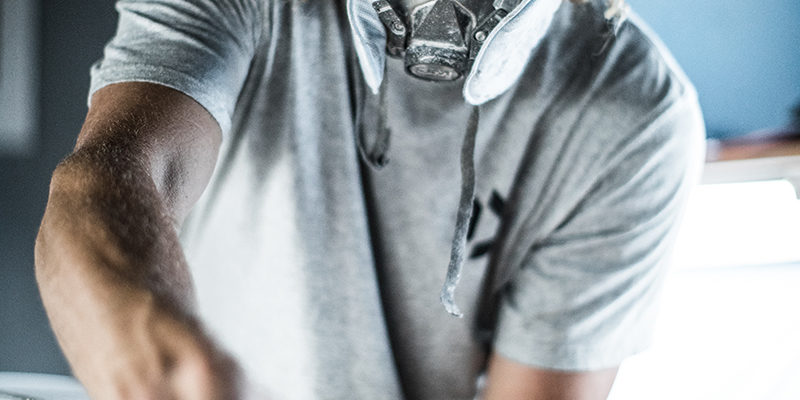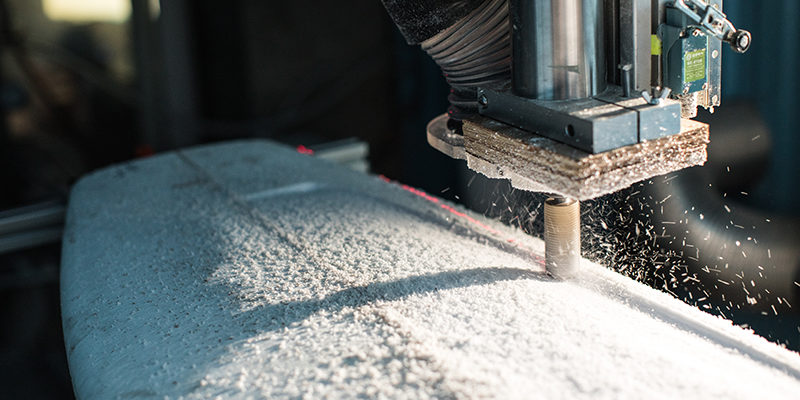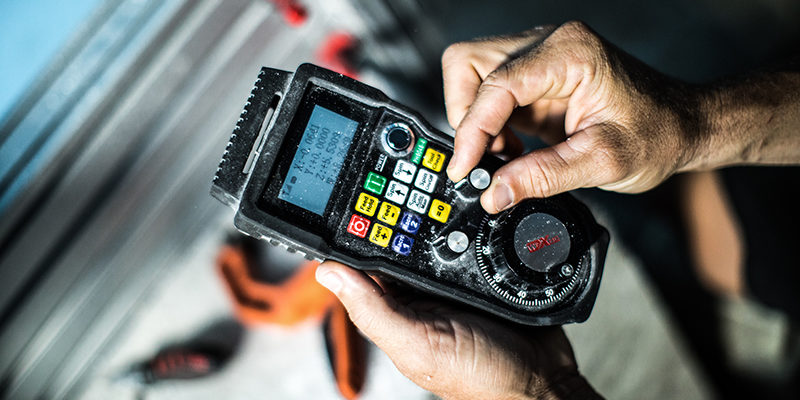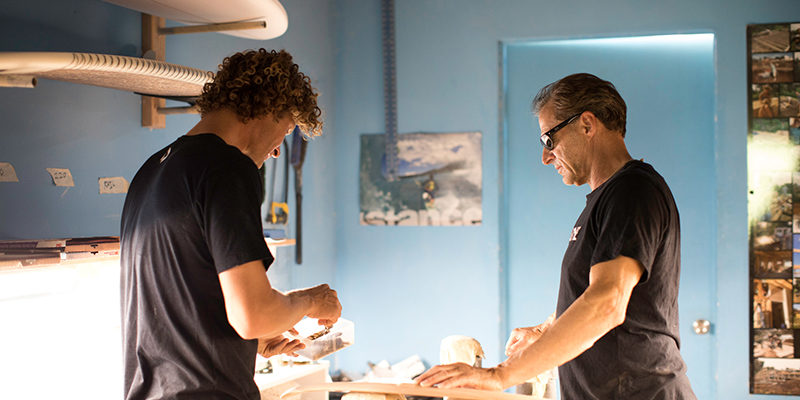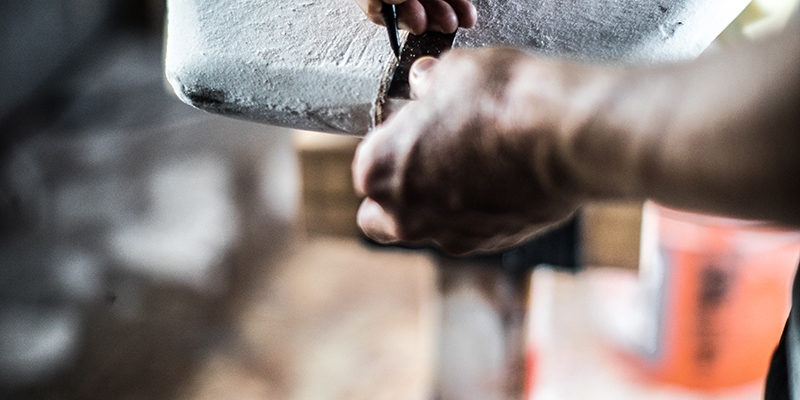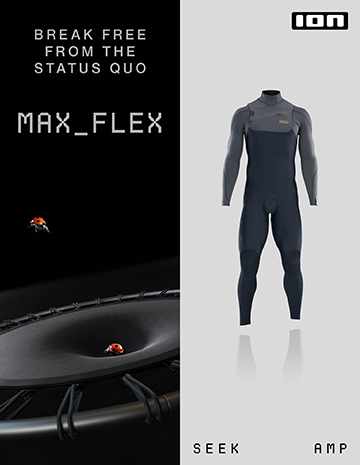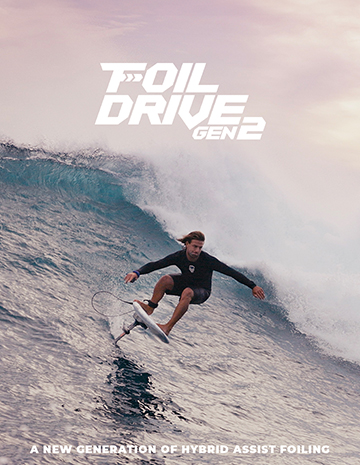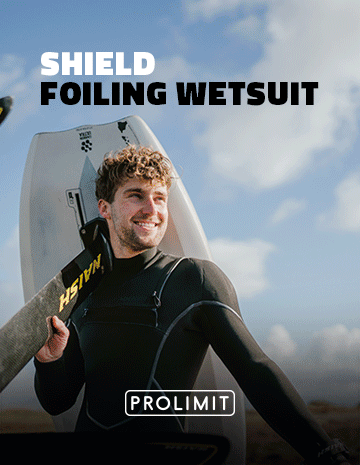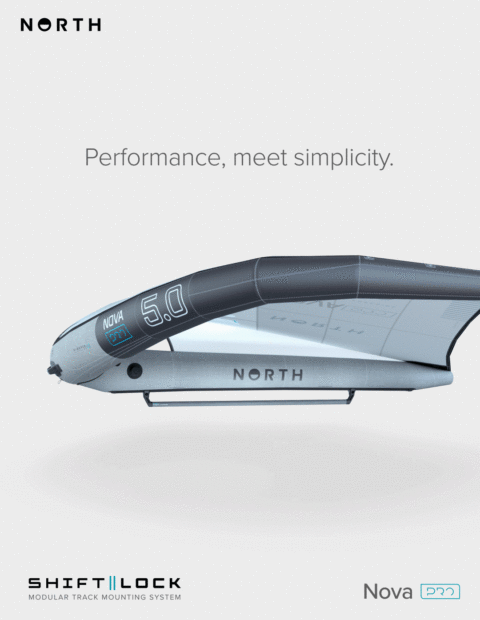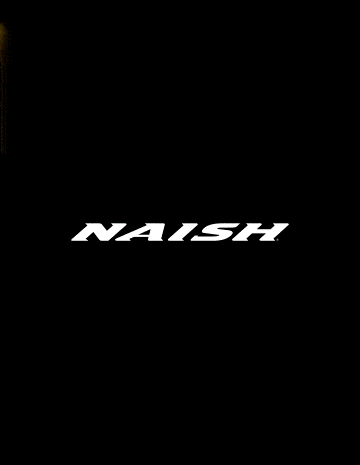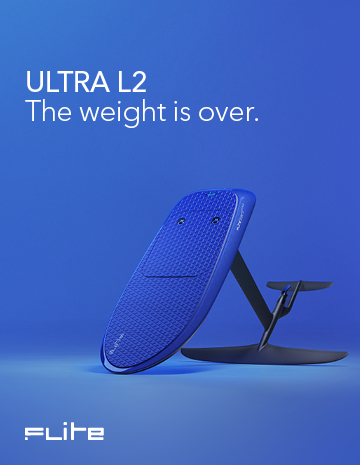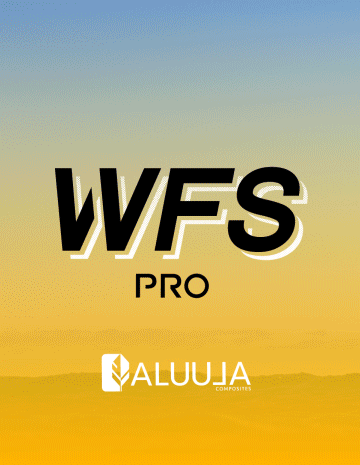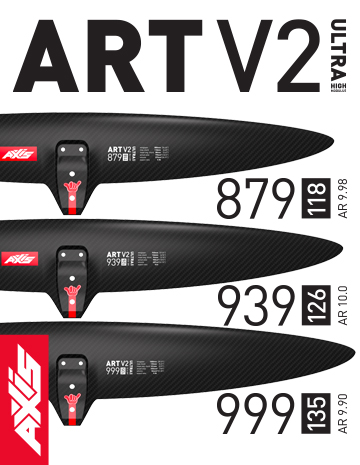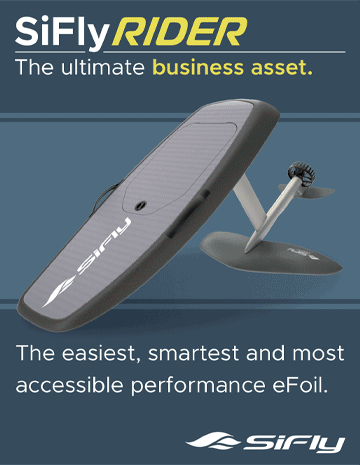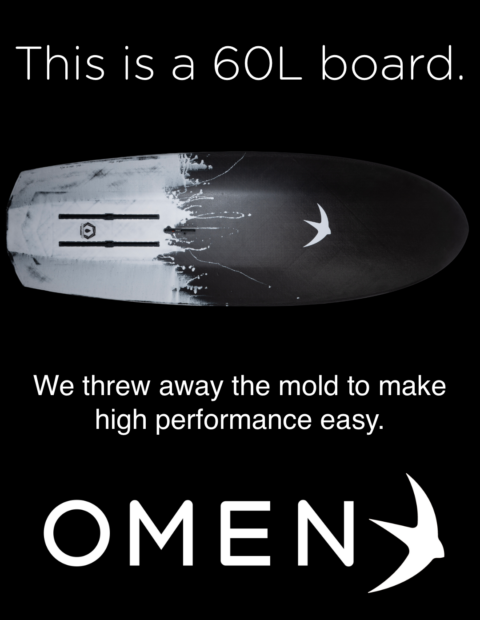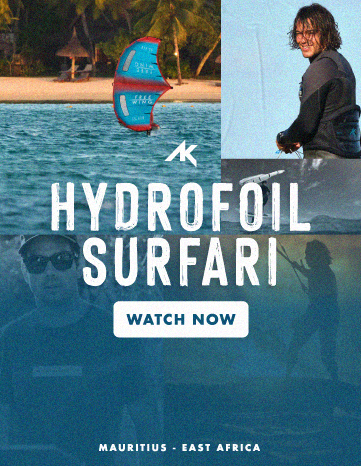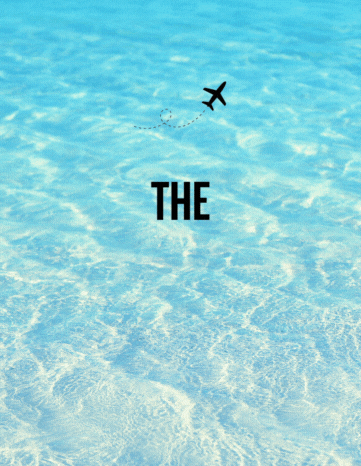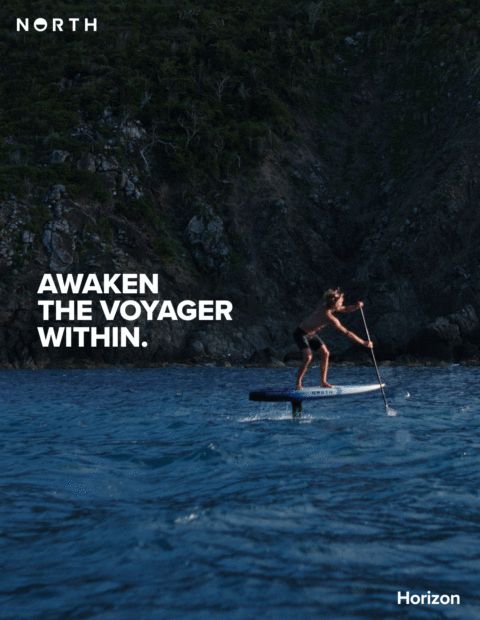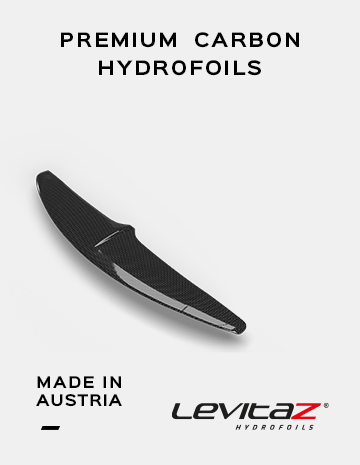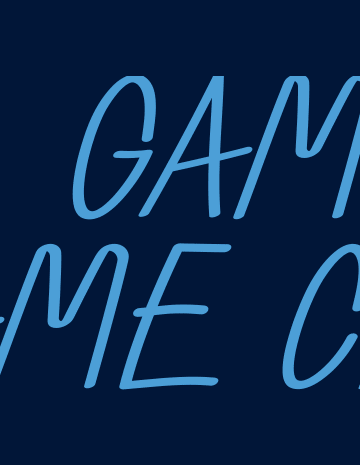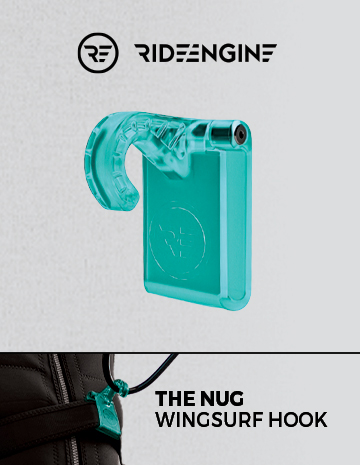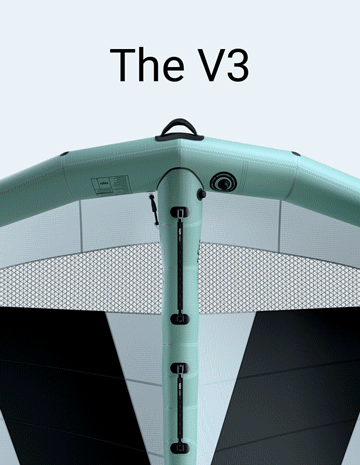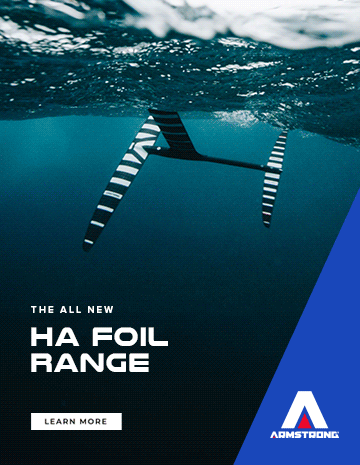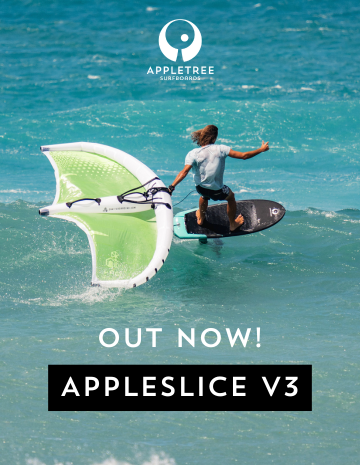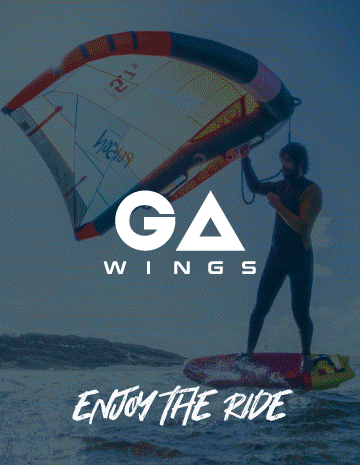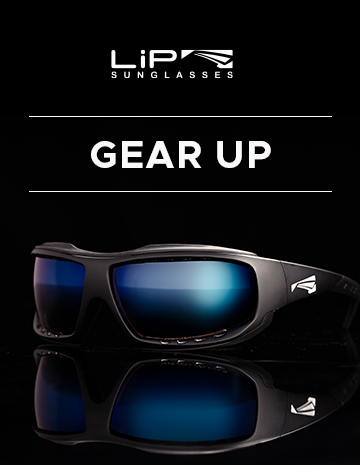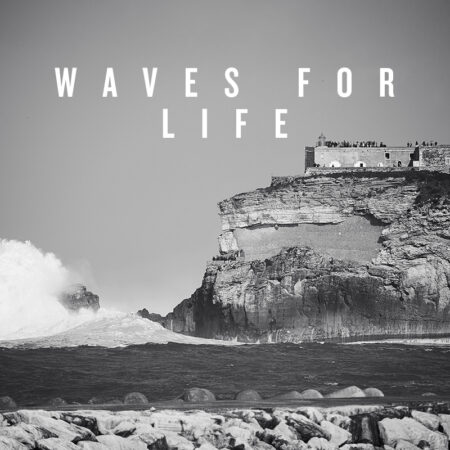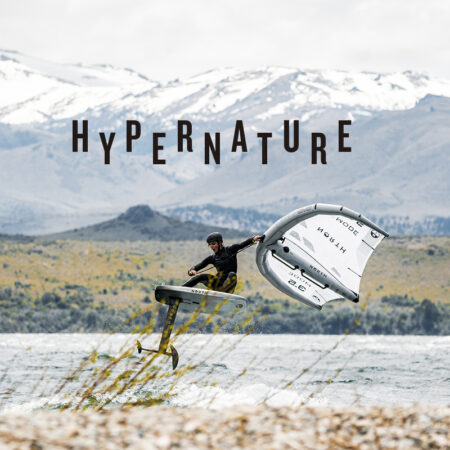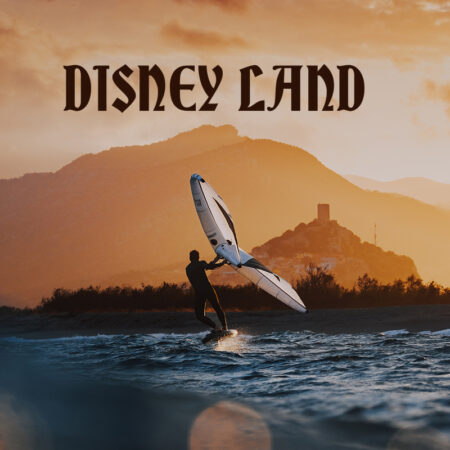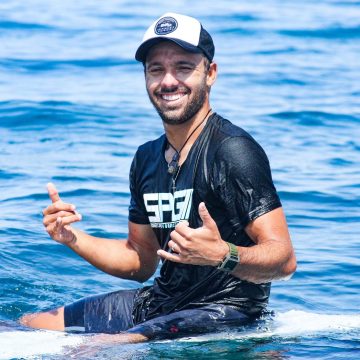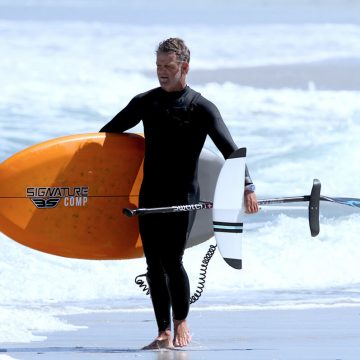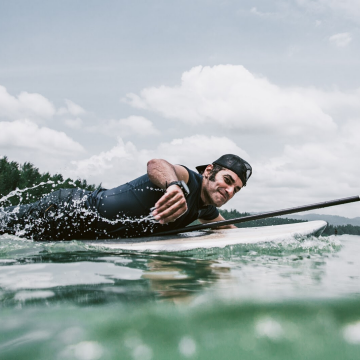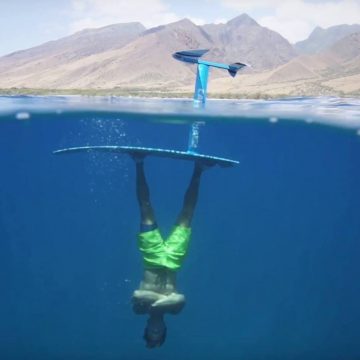THE EARLY PROMISE
Fanatic Board Designer Sky Solbach and Duotone’s chief Wing Designer Ken Winner are two names that, more than most, are deeply intertwined with the development of modern wind sports, not least of which is wing foiling. We explored winging’s origins, accessibility, and tapped into why winging seems to be very much here to stay…
Words: Kjell van Sice
Kjell: So Sky, Ken… take me back to how you both found yourselves in water sports.
Sky: I grew up in a family where my first memories were made on the beach windsurfing with my parents. I’ve always been around water sports. Luckily, I’ve been able to follow a path that allows me to do this as a career. It’s something I’d definitely be doing even if it wasn’t my job. Like you said, it’s a lifestyle and something I do to keep myself happy and fit. Hopefully I’ll keep on doing it for a long time!
Ken: From my side, I grew up sailing. My dad had boats. He bought them, worked on them, and sailed them. When I was about 20, I started windsurfing and that’s how I got my sailing fix from then onward. It’s been an interesting journey from windsurfing to kiting, with the occasional excursion into SUP surfing and surf foiling, and then on to wing foiling. I find that surf, downwind, and kite foiling are fairly difficult. Wing foiling is pretty easy in comparison, so I think foiling will experience its greatest growth with the addition of the wing.
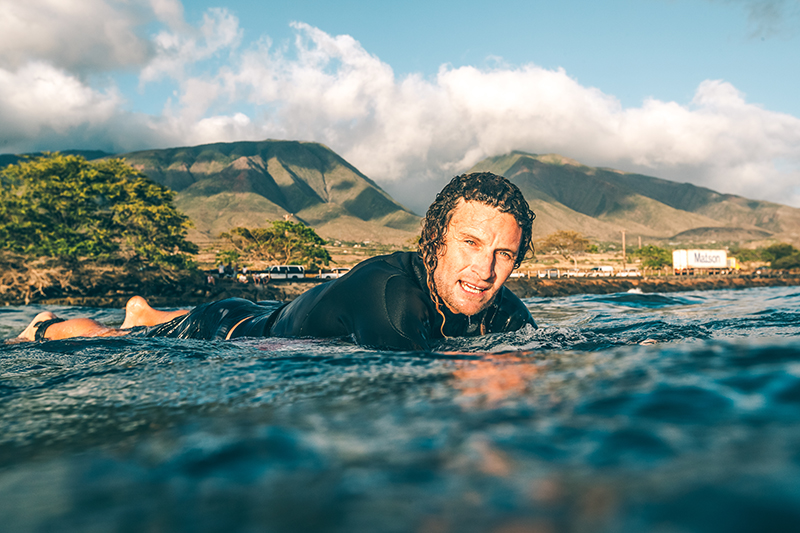
Kjell: Given that, how does foiling fit into your routines?
Sky: It’s been an amazing addition to my quiver of toys for the last few years, that’s for sure! All the days when we’d go to the beach and the wind and waves weren’t that good, you could only go out and do big airs for so many hours before getting bored. I found myself always waiting for those really good wave days — those are the days I live for — and now with foiling I’m pretty much guaranteed to get in a good session no matter the conditions. When there’s no wind and small waves, I go surf foiling. If it’s blasting wind but no surf, I’ll do a SUP or wing foil downwinder. It’s just added so much fun and variety to everyday conditions. That translates really well for everyone. We live on Maui where we’re blessed with pretty good conditions all the time, but for people whose local spot is a lake without the most exciting conditions, they can pick up a wing foiling setup and are basically guaranteed to have fun.
Ken: I agree with that. Foiling has been an amazing addition to watersports, and if I were less busy I’d take some time to improve my downwind foiling abilities. Of course, since I’m in the business of designing wings for wing foiling, I’m usually working on those. I typically ride the same hydrofoil day-after-day with wing testing, so I don’t explore too much there. It’s nice to know I can get a single hydrofoil and it’ll work for a lot of different activities.
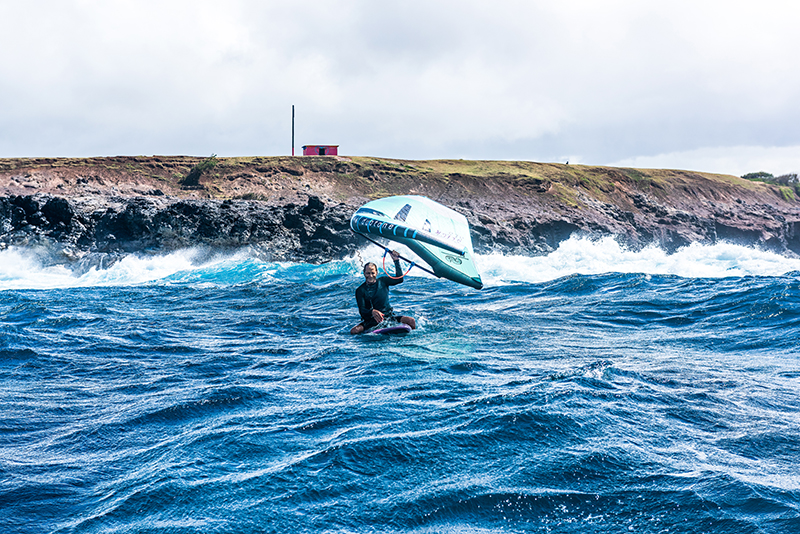
Kjell: Ken, you mentioned earlier that wing foiling brings a new level of accessibility to wind sports. Part of what excites me is seeing people come from surf foiling to wing foiling (like myself) and often discovering wind sports that way. Considering how many times you’ve been at the genesis of a wind sport, do you think wing foiling’s just a step in the evolution of board riding or is it something more?
Ken: I think it’s going to be around for a long time, partly because there are people of all ages doing it. Kids are getting really good really quickly. It’s encouraging to see entire families doing it here on Maui in the Kahului Harbor. It brings us back somewhat to the early promise of windsurfing when it was something really revolutionary for its time, something that people enjoyed doing in relatively mild conditions and evolved to become more exciting in bigger conditions. Wing foiling achieves that excitement level that people crave, but it does so in conditions that are much more commonplace. You don’t need rough water or strong winds to enjoy the magic of flying over water, so the fact that it’s exciting yet accessible means it’ll remain popular and durable.
Kjell: Sky, thinking in line with the family-friendly aspect of foiling that Ken just put quite concisely, what’s your view on how foiling has transitioned from this pointy-edged, razor-sharp, high speed thrill ride discipline into something you’d feel comfortable putting your family on over the weekend?
Sky: As the sport evolves, people’s perception is changing. The first time I saw foiling was when I came to Maui in 2000. Laird and Dave Kalama were towing into big waves at the time, and it just looked crazy, like something out of Mad Max. With those big boots on, it looked so inaccessible and extreme that I didn’t even want to try it at the time. In the early days, that was the perception: next level and not attainable by mere mortals! Clearly, that’s changed over time as the gear has evolved and gotten much lighter and more usable. Now the corners are rounder and the foils are lighter. It’s just to a point where it’s benign. Those details have made all the difference in the world, I think.
Kjell: You both have such an influential role in shaping all these factors that make the sport more attainable. Is accessibility always the primary goal when you’re designing new boards and wings? How does that relate to performance?
Ken: I’d always found that people were afraid of the risks associated with the foil itself, so I designed a kite hydrofoil that had no sharp edges and almost nothing to get hurt on. It ended up being a commercial failure because it turned out most people aren’t that worried about getting hurt! The risk for most people isn’t that great with some basic precautions. So, if the market demands a really safe hydrofoil, the design is already there. In fact, a French company (Decathlon) took the idea I had – not sure if that’s been a commercial success or not – connecting the front wing to the back wing at the wingtips with a bar. Basically, if you fall on it, it’s more like a falling on a surfboard rail than a knife. The issue of accessibility is a prominent one, and we’re always working to give people the things they want and need for their level of ambition and ability.
Kjell: Yes! I remember that foil you made at North, but I forget what it was called?
Ken: I don’t remember either…but I should mention I went a step further and positioned the foil so that it could work with existing kite foil boards with boxes that were positioned at the rear of the board. I went to every extreme to make it something people could just step right onto and use with minimal risk. We learned that going to such lengths to improve safety is not really desirable for now.
Kjell: Pivoting to board design Sky, what was it like for you to come from shaping planing boards to hydrofoil boards with contours designed to stay off the water?
Sky: It was pretty cool, actually. It opened up a lot of possibilities to do whatever I wanted with shapes and contours. We ended up finding that boards make a lot bigger difference than we initially thought. At the time, Ken designed the first few prototype wings and we had existing SUP foil boards that automatically became the first wing foil boards. They tended to be pretty big. I think my board at the time was 6’3 x 28” wide, maybe 110 liters. We quickly learned that we could go a lot smaller than that. The first dedicated wing foiling board I made was back around 2018 or so, and it was 5’2 x 22” and 55 liters. Back then, it was tiny and seemed almost too small to ride. The year after, we launched our first production wing foil boards with Fanatic. It’s come a long way. Next year, we’re launching a range that goes all the way down to 4’2, starting at 20L and topping out at 140L with 10 liter increments in between. It’s been interesting to see how much we’ve progressed in just four years, starting with really crazy double concaves to see what we could get away with, and over time refining it back after realizing that too many things added drag. Bevels and step tails are great for reducing catching when touching down, but you also need glide and the ability to get up on foil. It’s a balance and has brought things back down to reality where the boards are looking just a bit more normal than two years ago.
Kjell: What’s the parallel to that in wing design, Ken?
Ken: With wings, we had a similar “green field project” where we were looking at all ideas for a while. My very first wing had soft handles, which I immediately hated and replaced with PVC handles much like the concept on the latest Unit. I progressed to the theory of using a boom, on the premise that you don’t need both a boom and a strut. Of course we’ve backed off that with the Slick, which has both a shortened boom and a strut. We have a lot of different configurations to try, and it’s really hard to get through all the ideas as quickly as we can to improve the accessibility, ease of use, and performance of the wings. We’re also trying a lot of materials to increase the stiffness or the durability or the cost. One thing we’ve been fortunate to have is a revolution in ultra-high molecular polyethylene products. If you think of kiting, we use Dyneema lines. If we only had polyester, we probably wouldn’t be kiting because polyester kite lines would’t work very well. Well, now we’re getting Dyneema products in the leading edges and even the canopies of some of our wings. Granted, it’s more expensive. A D/Lab wing might be 50% more expensive than a Dacron wing, but the reduction in weight and improvement to performance is worth it for the person who can afford it without going hungry! So, we have just an enormous number of ideas to work through with winging. We’re getting there little by little.
Sky: I’ll add that as these wings get smaller and more powerful, that translates directly into our board design as well. It ends up meaning we can ride smaller boards than ever before.
Ken: And, of course, as the wings and boards get better, we can ride smaller hydrofoils more comfortably.
Kjell: What’s your working relationship like given your long history together?
Ken: We work closely together, and have been for 17 years. Sky has been an incredible asset to the company because he is not just smart technically, but he is also a very sensitive and finely tuned tester of kites, boards, and hydrofoils. The company wouldn’t be where it is today without Sky on the team, and everybody at the company really values him. I don’t test boards so much because my input isn’t as valuable there. I didn’t grow up surfing aside from windsurfing, but I have helped with kite race boards in the past and occasionally do so with wing boards now. Most of that is Sky’s territory.
Sky: As far as the wing stuff is concerned, it’s totally interconnected with board and wing testing as we said before. We want to make sure things are evolving at the same rate. On any given day, Ken will have some new wings to test at the beach and I’ll have a prototype board I can throw in the mix. We tend to test stuff together all the time. Our morning routine begins with a rally of text messages checking the conditions to lay out the day’s program, then it’s off to the beach.
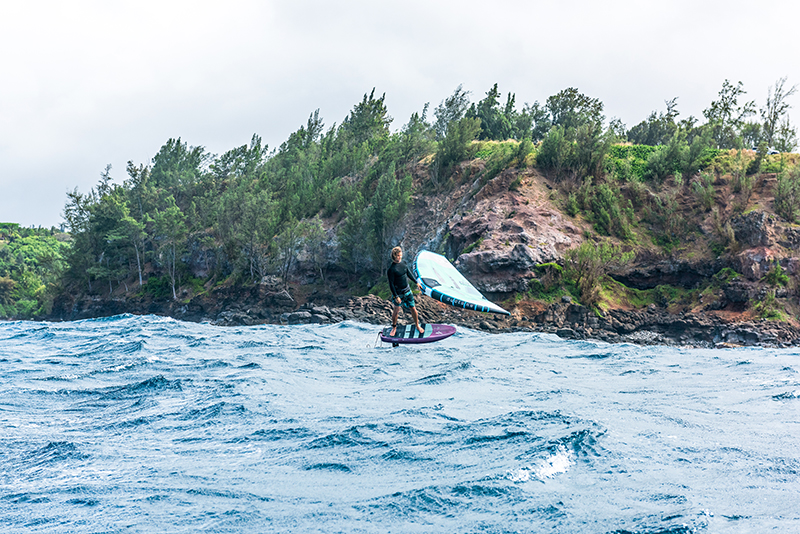
Kjell: That’s the routine to have! Makes me think of what you said at the very beginning of our conversation about how you’d have this lifestyle even if it wasn’t your job…
Ken: I have to add one other condition. When we’re testing now, we always have to look at the tide!
Kjell: I think most of us can relate to that. Capping things off, let’s talk about picking gear. What words of wisdom do you have for those who are just coming into the sport?
Ken: I really feel for people coming newly into the sport. There’s so much contradictory information out there, it’s hard to know who to believe. I see a lot of novices on the wrong equipment, and it drives me and my wife crazy. She’s a very proficient wing foiler, and she can wing in 30 knots of wind and 15 foot seas. It frustrates her to see other women on the wrong gear that’s just difficult to ride. They’ll ride it for months and months, not understanding that if it’s super difficult to ride, they’re on the wrong stuff. The average semi-athletic beginner should be able to get out there and ride within a few days — if that’s not happening, they’re on the wrong gear.
Sky: I agree. The sign of good equipment is something that’s easy to jump on and ride. That’s something we definitely strive for in all the gear we’re making. High performance, but intuitive and easy to use.
Ken: To give you a little idea of our experience with hydrofoils and making them more accessible, my wife is a windsurfer and kiteboarder. She wasn’t at all interested in winging until I convinced her to try, and she had to suffer through pretty crude prototype foil equipment at first. The process of working her through all the components has very strongly informed our understanding of what a beginner needs.
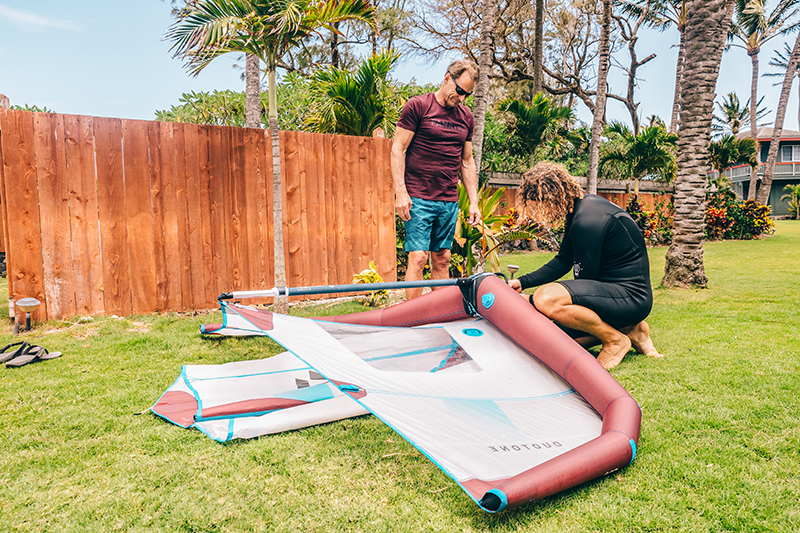
Kjell: When you say improvements, do you mean changes to the overall setup’s design or getting the rider’s own geometry details dialed in?
Ken: Design for novices in general. For beginners, a long fuselage is good. A short-ish mast is a good thing. Being sensitive to the fact that the back wing angle, when changed by a quarter of a degree, will change how easy it is to ride your hydrofoil. Before winging, we’d take a jet ski and a hydrofoil and tow in, change the back wing angle, tow in some more, change the wing angle, and so on. We have a long history of working with hydrofoils at a pretty intense level.
Sky: We spent a lot of days on that ski, and got pretty good at changing out the screws without dropping them into the water!
Ken: A couple funny things happened at the very beginning. In 2018, Sky took an early wing prototype to a dealer meeting in Tarifa, and two months later we took wings to the Gorge for another meeting. Nobody was interested. In November that year, I got our CEO, Till, out on the water with a wing. That’s when he realized how fun it could be. It basically took six months to get anyone interested other than Alan Cadiz and Sky.
Sky: Luckily Ken kept pushing behind the scenes, because when I went to Tarifa, there really was no interest. I gybed and tacked back and forth and the response was really just “meh.” No one wanted to try. But with Ken’s energy, by the time we were ready to launch a product the following year, it was already pretty refined.
Kjell: What pushed winging over the edge?
Ken: I think it’s hard for people who haven’t done it to realize it’s not that hard or difficult. For people who are hardcore into sports like kiting, the sports are visually exciting; huge jumps or surfing big waves. It’s all very dynamic. So winging is a sport you actually have to try to appreciate. Once you do, though…


